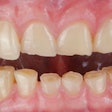A novel way of preserving tissue may improve the viability of meniscal grafts and end the current shortage, offering relief for patients with temporomandibular joint (TMJ) disorders and damage. The findings were published recently in Advanced Healthcare Materials.
A research team headed by Shangping Wang, an assistant professor of bioengineering at Clemson University, has pioneered a method of freezing meniscal tissue, a crescent-shaped rubbery tissue that stabilizes joints and cushions them from impact, like chewing, while perfectly preserving it so it can successfully be transplanted into patients with TMJ and knee disorders.
"(This) opens new avenues for the successful preservation of various avascular tissues and holds the promise of facilitating widespread adoption of viable graft transplantation and research endeavors," Wang et al concluded.
Injuries to the meniscus, either from injury or degradation, can lead to chronic pain and affect a person's quality of life.
However, the unique characteristics of the meniscus make the preservation of harvested tissue difficult and has led to a shortage of grafts. Currently, the supply of tissue falls woefully short of the estimated 1 million people who undergo surgical repair or menisectomies each year.
From 2007 to 2011, there were roughly 3,300 meniscal transplants, according to the researchers. For people with knee injuries or TMJ, prolonged waits for tissue can lead to further joint damage and impaired quality of life. Existing preservation methods like harvesting tissue from cadavers are flawed in that they can lead the tissue to degrade too quickly or diminish their quality, the authors wrote.
 A study that came out of Clemson University's partnership with the Medical University of South Carolina and an industry collaborator sharpens the focus on the knee or the jaw's temporomandibular joint (TMJ). Image and caption courtesy of Clemson University.
A study that came out of Clemson University's partnership with the Medical University of South Carolina and an industry collaborator sharpens the focus on the knee or the jaw's temporomandibular joint (TMJ). Image and caption courtesy of Clemson University.
To overcome these challenges, Wang and her team developed a vitrification method in which allograft material, including knee menisci and TMJ discs, were suspended in a chemical solution and stored at an ideal lower temperature that would not damage the tissue from the chemical solution or the formation of ice crystals, thus ensuring a viable allograft for transplantation.
To ensure the team found the right balance between the exposure time of vitrification without damaging the tissue, they used microcomputed tomography and were able to avoid significantly damaging or killing the tissue. The new method holds promise on several fronts, they wrote.
"Notably, this pioneering work represents the first successful application of vitrification strategies to preserve whole viable grafts in both tissue types," Wang et al concluded.
The research was a collaborative effort between Wang and researchers at Clemson University and the Medical University of South Carolina. A provisional patent of the vitrification process has been established through the Clemson University Research Foundation with backing from the foundation's Executive Director Chris Gesswein.



















